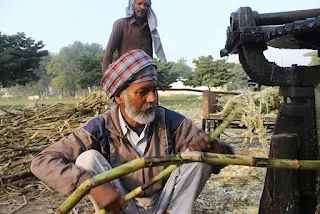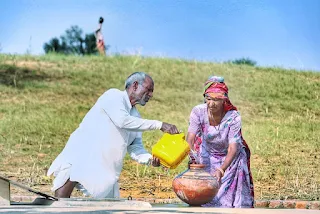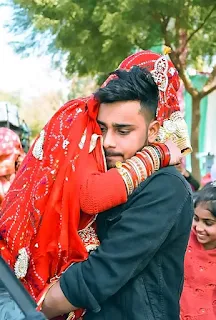The Jaat caste is a prominent social group found primarily in the Indian subcontinent, with a significant presence in the states of Haryana, Rajasthan, Uttar Pradesh, and Punjab. This caste holds historical significance and has played a crucial role in the socio-cultural fabric of the region. In this essay, we will explore the origins, social structure, occupations, cultural practices, and the contemporary status of the Jaat caste, providing a comprehensive understanding of its significance.
Origins and History:
The origins of the Jaat caste are deeply rooted in the agricultural communities of ancient India. The term "Jaats" is believed to have derived from the Sanskrit word "Jāta," meaning birth or descent. It is thought that the Jaats were primarily involved in farming and animal husbandry, which contributed to their identification as an agrarian community. Over time, they established themselves as a distinct social group with a distinct identity.The exact origins of the Jaat caste are debated among scholars. Some theories suggest that they may have descended from pastoral communities mentioned in ancient texts such as the Rigveda. Others propose that they have Indo-Scythian or Central Asian ancestry, attributing their physical characteristics to these origins. However, it is important to note that tracing the exact historical origins of a caste is challenging due to the limited availability of written records and the complex intermingling of various communities over centuries.
Social Structure and Organization:
The Jaat community follows a hierarchical social structure similar to other castes in India. They are divided into various sub-castes or gotras, which are considered to be descended from a common ancestor. Each gotra has its own traditions, rituals, and rules regarding marriage and social interaction.Traditionally, the Jaat community had a panchayat system, which consisted of a council of elders who played a significant role in resolving disputes and maintaining social order. The panchayat system continues to hold importance in many rural Jaat communities, although its influence may vary in different regions.
Occupations and Economic Life:
Historically, the Jaats have been primarily engaged in agriculture and animal husbandry. They have played a crucial role in the development of agricultural practices in the regions they inhabit. Known for their expertise in farming, irrigation, and land cultivation, the Jaats have contributed to the agrarian economy of the region. |
| In-depth analysis of Jaat caste origins |
With the passage of time and socio-economic changes, many Jaats have diversified their occupations and entered various professions. Today, Jaats can be found in a wide range of fields, including government services, business, education, armed forces, and politics. Some have even achieved prominent positions in these domains.
Cultural Practices and Customs:
The Jaat community has a rich cultural heritage with distinct traditions and customs. They celebrate various festivals and events that hold religious, agricultural, or historical significance. The festivals of Holi, Teej, Gangaur, and Baisakhi are widely celebrated among Jaats, reflecting their cultural roots and traditions. |
| Traditional attire and jewelry of the Jaat community |
Jaats have their own folk music, dance forms, and performing arts that showcase their vibrant culture. Music forms such as "Ragni" and "Ghoomar" and dance forms like "Gugga" and "Jhumar" are popular among the community. These cultural expressions serve as a means of entertainment, storytelling, and preservation of their heritage.
Marriage and Social Life:
Marriage is an important aspect of Jaat society, and it typically follows strict rules of endogamy, where individuals are expected to marry within their own caste and gotra. This practice aims to maintain social and cultural purity and preserve family lineage. Inter-caste and inter-religious marriages, although not common historically, have become more prevalent in recent times due to changing social dynamics and increased mobility. |
| Intricate Jaat caste wedding rituals and customs |
In rural areas, marriages are often arranged with the consent of the families involved. However, there is a growing trend of self-choice marriages among the younger generation, particularly in urban areas. These changes indicate a shift toward a more liberal approach to marriage and relationships within the community.
Contemporary Status and Challenges:
In contemporary times, the Jaat community faces a mixture of opportunities and challenges. On one hand, there are successful Jaat individuals who have excelled in various fields, contributing to the progress and development of society. On the other hand, there are issues related to socio-economic disparities, educational gaps, and caste-based discrimination that still persist.One of the significant challenges faced by the Jaat community, as well as other castes in India, is the issue of social inequality and caste-based discrimination. Efforts have been made to address these challenges through legislation, affirmative action, and awareness campaigns. Government policies, such as reservations in educational institutions and government jobs, aim to provide opportunities for the upliftment of marginalized communities, including the Jaats.
Another challenge is the issue of caste-based violence and conflicts, which have at times flared up in certain regions. These conflicts may stem from factors such as land disputes, political rivalries, or caste-based prejudices. It is essential to address these issues through dialogue, understanding, and effective governance to foster peace and harmony within society.
Conclusion:
The Jaat caste has a long and intricate history, deeply rooted in the agricultural communities of the Indian subcontinent. Their contributions to agriculture, cultural traditions, and socio-economic development have been significant. While the community has seen progress and diversification over time, it continues to grapple with challenges related to socio-economic disparities, caste-based discrimination, and social inequalities.Understanding the Jaat caste and its nuances provides insight into the complex dynamics of caste in India. It is crucial to foster inclusivity, respect diversity, and work towards a society where individuals are not judged or limited by their caste, but rather celebrated for their talents, abilities, and contributions to the betterment of society as a whole.
